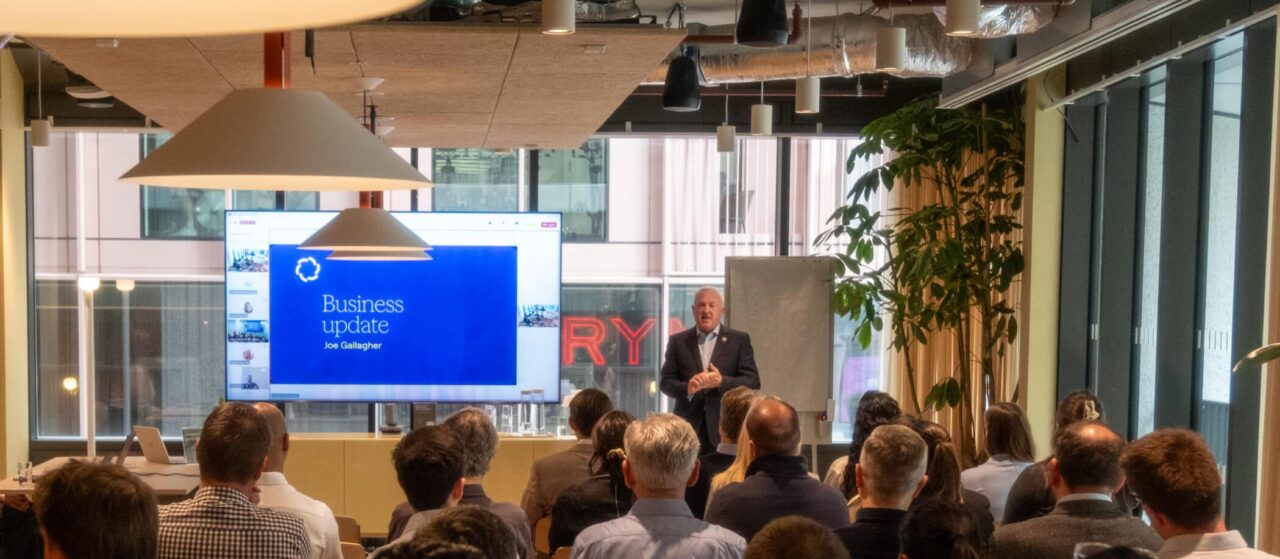As a futurologist, I’ve been working with new products and technologies for 25 years. I’ve always had an eye on their impact and the opportunities they present for businesses.
My role has evolved considerably since I first studied technology roadmaps and the future of tech during the 1990s dot-com boom. Today, in 2024, it’s less about demonstrating the potential of emerging technologies and more about exploring their strategic impact on our business as a network provider.
There’s always been a fast pace of change in the TMT sector. But following the COVID years, when low levels of R&D and few product releases led to huge pent-up demand, it now feels like the dam has broken. The industry is churning out innovations that have been in the pipeline for years. You can see it at exhibitions and business conferences. It feels intense.
As telco operators, we need to consider the network infrastructure that’s needed to support businesses using these emerging technologies. Businesses need to think of their network as the backbone of their organization. Whatever their business may be, the implications of these shifts in technology are huge.
Here’s a look at five disruptive technologies I’ve identified in a new report, ‘Ready for Impact?’, written alongside John Chester, Director at Virgin Media Business Wholesale, and Jurgen Hatheier, Chief Technology Officer at Ciena.
The Metaverse
The Metaverse is already transforming online gaming, and soon it will do the same for how we live and work. And it’s going to supercharge global data consumption.
Within a decade, users will demand an additional trillion gigabytes per month of bandwidth in Western Europe, with companies like Meta, Microsoft, Apple, and Google driving the Metaverse ecosystem through their development headsets, platforms, and applications for business and social interaction.
So as the Metaverse grows and evolves, organizations looking to make use of it should prepare for a disruptive impact on their network architecture. It requires synchronous, low-latency traffic that goes both upstream and downstream to avoid lag and head-spinning glitches. Ultimately, the Metaverse’s success rests on a high-speed fibre-to-the-premises (FTTP) network to stream experiences seamlessly and in real-time.
Extended Reality
Building on the Metaverse, extended reality – or XR – overlays the physical world with a digital twin.
Phase one is seamlessly shifting your screen from the phone in your pocket to something in front of your eyes. In phase two, you may no longer need your phone. Once the tech milestones are hit, we’ll use XR through wearables that weigh less, have better optics and better battery life.
This technology will demand good connectivity, leveraging edge and cloud providers. Having servers closer to the end user cuts travel time for data for faster processing and lower latency.
If, for example, you are streaming high-quality video, 4K video is good, but 8K is better. That requires an internet connection with a minimum download speed of 50 Mbps per user. Double that for extended reality. And XR is not a flat-screen TV. As you turn your head, you are effectively looking at a different screen. So, you need more data to allow for movement and prevent blurring or motion sickness.
Artificial Intelligence
Artificial intelligence is going to change the way that we work and the way we interact with each other, on networks and devices.
But all advanced AI applications are data greedy. Over the next few years, the total volume of data created, captured, copied and consumed worldwide will grow rapidly. That will be coupled with an almost exponential growth in the infrastructure needed for AI to process these datasets.
A growing field for AI is computer vision: the ability of computers to recognize and analyze moving images in real-time. In grab-and-go stores, shoppers simply fill their bags while AI-equipped computer vision cameras recognise every item and bills it to your account. The tech can also handle number plate recognition in car parks, facial-recognition for front-of-house security cameras or keeping track of livestock on a farm.
Across industries and use cases, the same principle applies: the further you send your data, the higher the latency and the longer it takes to get a response. This is why AI also tends to push more computing towards the edge.
Quantum Technology
Quantum technology is a massive change in the way we compute. By supercharging processing power, it can perform previously impossible tasks in seconds. Big things happen when computers get faster.
That vast computing power has practical benefits for energy, pharmaceuticals and healthcare. The more data quantum computers tackle, the more complex algorithms they can run.
But its functionality rests on enormous volumes of storage, paired with security and data integrity. Again, this kind of technology requires a robust, high-speed fibre connection. Poor connectivity will create a data bottleneck and lag that cancels out potential benefits.
Disrupted Ledger Technology
Distributed Ledger Technology (DLT) allows multiple users to access, validate, and update records in a shared database. It is the foundation on which blockchains are built. A public DLT lets all users see any changes made to the records and who made them. As a result, it’s accountable, secure, and accessible.
DLT has the power to unlock the full potential of the Internet of things (IoT) where physical objects, from kitchen appliances to cars, use sensors or software to connect and exchange data.
Network planners need to account for the major bump in demand driven by DLT and associated technologies. The architecture needs to be all about the acquisition and transfer of information in a timely manner.
Final thoughts
Now more than ever, businesses need to be agile to leverage these emerging technologies for their benefit. They have the potential to revolutionize operations, streamline processes and unlock new avenues for growth.
But to harness their power, businesses must not only adapt but also proactively develop a scalable flexible network equipped for the future. It’s a great opportunity for those with the right network connectivity to seize.
Read our full ‘Ready for Impact?’ report here.










